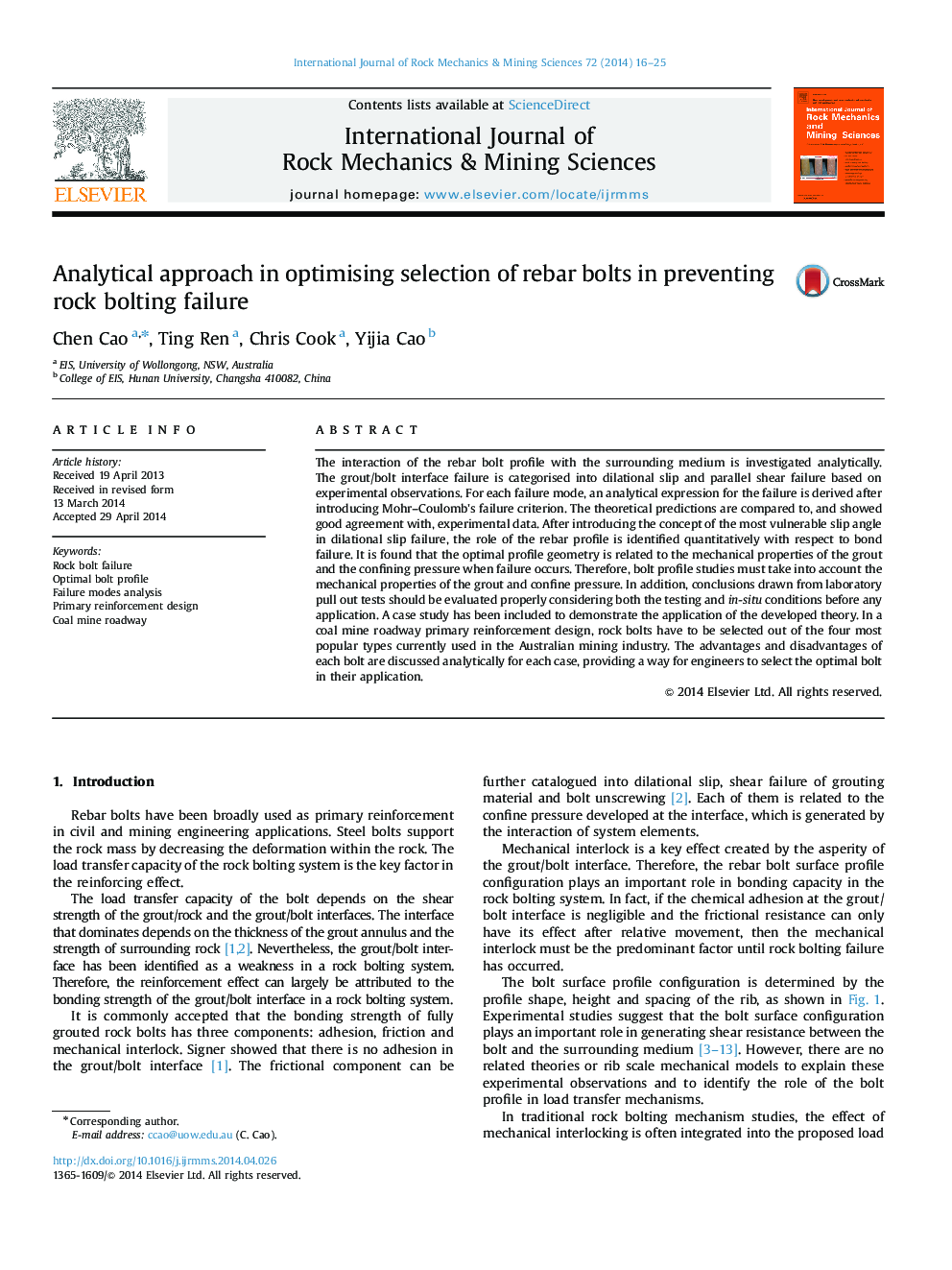| Article ID | Journal | Published Year | Pages | File Type |
|---|---|---|---|---|
| 7206624 | International Journal of Rock Mechanics and Mining Sciences | 2014 | 10 Pages |
Abstract
The interaction of the rebar bolt profile with the surrounding medium is investigated analytically. The grout/bolt interface failure is categorised into dilational slip and parallel shear failure based on experimental observations. For each failure mode, an analytical expression for the failure is derived after introducing Mohr-Coulomb׳s failure criterion. The theoretical predictions are compared to, and showed good agreement with, experimental data. After introducing the concept of the most vulnerable slip angle in dilational slip failure, the role of the rebar profile is identified quantitatively with respect to bond failure. It is found that the optimal profile geometry is related to the mechanical properties of the grout and the confining pressure when failure occurs. Therefore, bolt profile studies must take into account the mechanical properties of the grout and confine pressure. In addition, conclusions drawn from laboratory pull out tests should be evaluated properly considering both the testing and in-situ conditions before any application. A case study has been included to demonstrate the application of the developed theory. In a coal mine roadway primary reinforcement design, rock bolts have to be selected out of the four most popular types currently used in the Australian mining industry. The advantages and disadvantages of each bolt are discussed analytically for each case, providing a way for engineers to select the optimal bolt in their application.
Related Topics
Physical Sciences and Engineering
Earth and Planetary Sciences
Geotechnical Engineering and Engineering Geology
Authors
Chen Cao, Ting Ren, Chris Cook, Yijia Cao,
